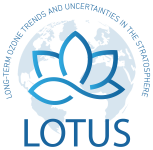Speaker
Description
Tropospheric ozone is a greenhouse gas and pollutant detrimental to human health and crop and ecosystem productivity. However, it is difficult to observe and quantify on the global scale, due to its acute spatial variability, resulting from its variable lifetime and its range of sources (injection from the stratosphere, or photochemical production from natural and anthropogenic precursor gases) and sinks (surface deposition and chemical destruction). To improve our understanding of ozone, the International Global Atmospheric Chemistry Project (IGAC) initiated the Tropospheric Ozone Assessment Report (TOAR) in 2014. With over 220 member scientists and air quality specialists from 36 nations, TOAR’s mission is to provide the research community with an up-to-date scientific assessment of tropospheric ozone’s global distribution and trends from the surface to the tropopause. TOAR built the world’s largest database of surface ozone observations and generated ozone exposure metrics at thousands of measurement sites around the world. The open-access database is facilitating new research on the global-scale impact of ozone on climate, human health and crop/ecosystem productivity. This presentation will provide an overview of global-scale tropospheric ozone trends, facilitated by the TOAR database and new research findings from the TOAR initiative. Trends are based on observations from remote surface sites, IAGOS commercial aircraft profiles, ozonesonde profiles and satellite retrievals. I will also provide an assessment of long-term surface ozone trends based on historical data from the early and mid-20th Century. The historical data have large uncertainties, however they indicate that surface ozone increased by 30-70% in the Northern Hemisphere from the mid-20th Century to the present. Modern observational techniques are more accurate and they indicate a general increase of free tropospheric ozone from the late 20th Century to the present, while trends at the surface are highly variable.

